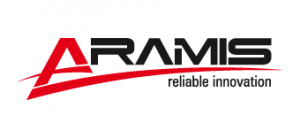BIG DATA ANALYTICS FOR THE IMPROVEMENT OF THE MAINTENANCE STRATEGY OF LARGE RAILWAY ASSETS
Description
The data collected on fleets of assets are usually very large and difficult to treat for extracting significant insights and information.
This large amount of information contained in big data challenges the asset management, as the number of maintenance strategies to optimize and administrate may become very large.
To address this issue, Aramis has developed a clustering approach for identifying and grouping a subsets of assets with similar reliability behaviors. This enables addressing the maintenance strategy optimization issue once for all the assets belonging to the same group.
Results
The proposed methodology has facilitated the asset management strategy, allowing reducing the number of scheduled maintenance interventions and the associated costs.
ADAPTIVE MODEL-BASED DIAGNOSTIC TOOL FOR VALVE EQUIPMENT IN RAILWAY APPLICATION
Description
Real industrial situations are generally characterized by the lack and the scarcity of field data of normal and abnormal system behaviors. To cope with this, Aramis has developed a fault diagnostic tool based on the First Principle Model (FPM) simulator.
The diagnostic tool is incrementally built from first-attempt, rough solutions based on the limited knowledge, information and data on the monitored system available at the beginning of the development.
Then, the diagnostic tool is incrementally updated and adapted to the evidence of laboratory and field data as these become available, thus improving its accuracy and providing more robust information.
Results
The developed diagnostic tool based on FPM simulator allows overcoming the problems due to the lack of field data, allowing obtaining accurate diagnosis of the degradation state of the valve equipment.
TRAIN AXLE BOX HIGH TEMPERATURE PREDICTION
Description
In the railways industry, axle boxes are critical components for train operation, and their temperatures are measured to track the health state. Aramis developed different ML methods, which analyze past data of axle box temperature patterns and their exogenous influencing conditions (train tracks, train speed, ambient temperatures …), and predict possible axle boxes overtemperatures.
Results
Aramis has developed health indicators describing the specific axle box degradation state and features describing external critical conditions.
Aramis built customized tools for signal spikes cleaning, GPS data reconstruction for a better train localization and indicators about data quality.
ENHANCEMENTS OF RELIABILITY CENTERED MAINTENANCE ANALYSIS AND ITS APPLICATION TO THE RAILWAY INDUSTRY
Description
The objective of the activity was the review of the existing maintenance programs through the Reliability Centered Maintenance (RCM). This has been enhanced to overcome the limiting factors such as the lack of reliability data at the beginning of the system operating life, the lack of accuracy of the supplier data, etc. Moreover, the technical considerations have been integrated with the economic ones, through the development of Life Cycle Cost (LCC) models, to guide the decision makers toward the optimal maintenance decision.
Results
The methodology has been applied to different train systems, yielding updated maintenance policies, which reduce the maintenance costs while fulfilling the safety and environmental requirements. In addition, a Graphical User Interface (GUI) has been developed to automatize the analysis and present the obtained results.
CONDITION BASED MAINTENANCE (CBM) APPROACH FOR A TRAIN TOILET DOOR SYSTEM
Description
Analysis of the electrical signals related to the toilet door systems of trains, to detect anomalies, according to the motion status of the train (static vs dynamic). On this basis, a classification algorithm has been developed, which detects the door anomalous conditions, while fulfilling the stringent requirements on memory and computational capacity.
Results
The developed system is now working on the entire train fleet.
DEVELOPMENT OF A TRAIN DYNAMIC WEIGHING IN-MOTION SYSTEM
Description
We developed a novel Dynamic-Weighing-In-Motion (DWIM) system, which estimates the loads of freight rail carriages passing on the tracks, based on the induced vertical strain, measured by optical sensors.
The final system avoids carriages stopping, with significant benefits to circulation timing and business, and strives for simplicity and accuracy.
Results
The results obtained show that the DWIM system provides accurate estimations robust to the train travelling speed. The activity to certify the system by the relevant authority is on-going.







